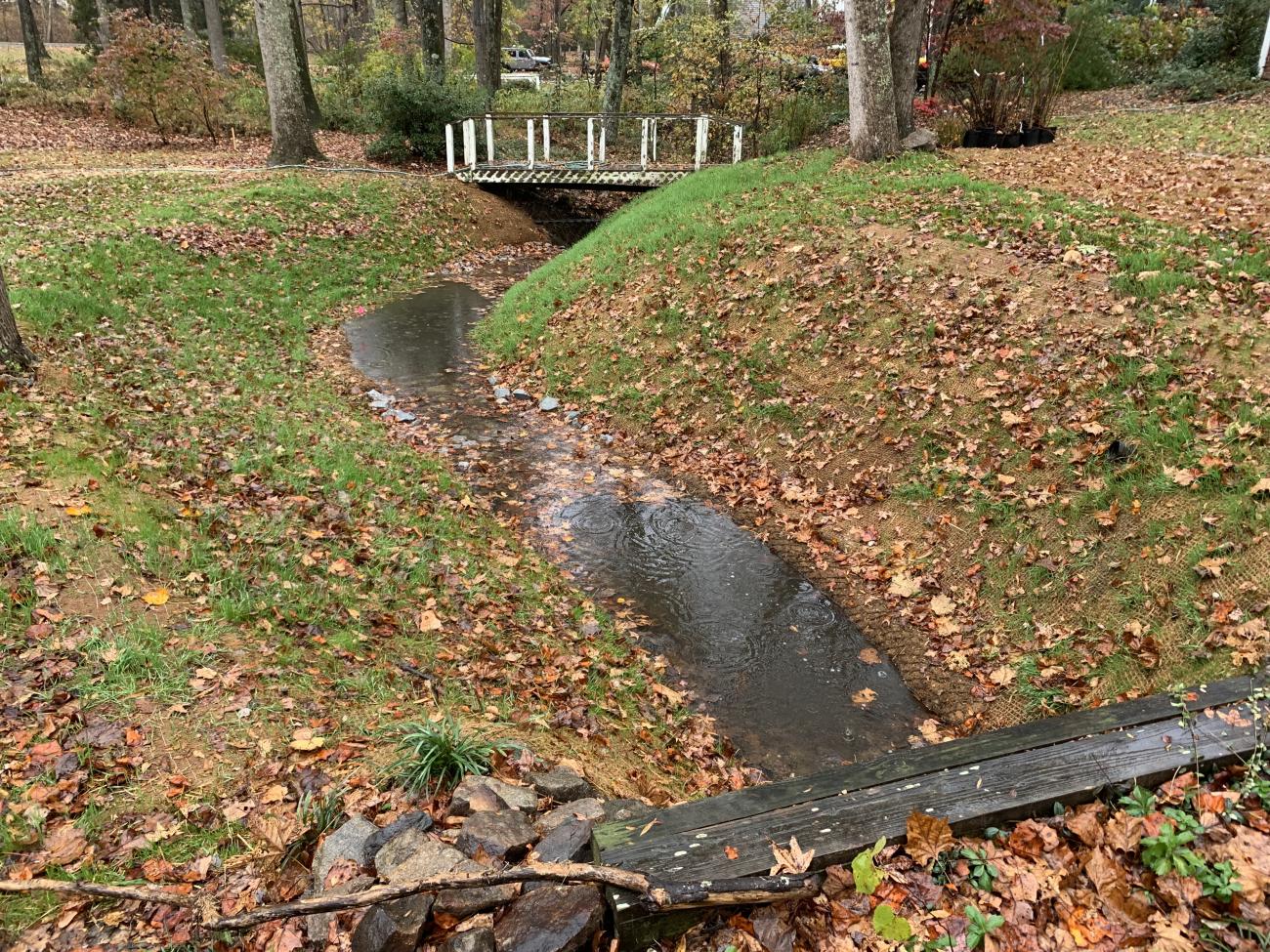Wake County's Soil and Water Conservation staff assist homeowners and communities on a voluntary basis. Technical Services are provided to landowners in Wake County with natural resource concerns.

Small Scale Backyard Erosion
Do you have issues with erosion on your property? Are you having difficulty establishing permanent groundcover?
Many drainage and erosion issues begin as small problems and only evolve into major issues when left unaddressed. When erosion issues are dealt with early, small-scale conservation practices, such as planting live stakes in streambanks or establishing vegetated cover on areas of exposed soil, can be a cost-effective solution to limiting further damage. The following guides explain methods for solving small-scale streambank erosion:
However, when significant damage has occurred, more robust action, like a stream restoration, may be necessary to address conservation concerns. Our Community Conservation Assistance Program (CCAP), may be able to help you install a Best Management Practice (BMP) to address erosion, improve water quality and treat stormwater runoff.
Community Conservation Assistance Program (CCAP)
CCAP is a voluntary, incentive-based cost share program designed to improve water quality through the installation of various BMPs on urban, suburban and rural lands not directly involved with agriculture production. Landowners may receive financial assistance of 75 percent of the BMP costs, up to the funding amount awarded through the CCAP regional application process.
Eligible landowners may include homeowners, businesses, schools, parks and publicly owned lands.
Interested landowners may apply through the Wake Soil and Water Conservation District for financial and technical assistance for the installation of BMPs to protect water quality. Applications are ranked based on water quality priorities and project feasibility. Only top-ranking projects will be submitted for a funding request.
For more details about the ranking process and program requirements, please see the CCAP Regional Application Flow Chart and Cooperator Acknowledgment Form.

Practices Eligible for Cost Share Under CCAP Include:
Backyard Wetlands
Constructed systems that mimic the functions of natural wetlands. A backyard wetland can temporarily store, filter, and clean runoff from a driveway, roof or lawn and thereby improve water quality. The wetland should be expected to retain water or remain saturated for two-three weeks. Backyard wetlands are intended to treat impervious surface areas of less than 2500 sq ft.
Stormwater Wetlands
A constructed system that mimics the functions of natural wetlands and is designed to mitigate the impacts of stormwater quality and quantity. Stormwater wetlands provide an efficient method for removing a wide variety of pollutants such as suspended solids, and nutrients (nitrogen and phosphorus), heavy metals, toxic organic pollutants). Stormwater wetlands are intended to treat impervious surface areas of greater than 2500 sq ft.
Bioretention Area
The use of plants and soils for removal of pollutants from stormwater runoff. Bioretention can also be effective in reducing peak runoff rates, runoff volumes and recharging groundwater by infiltrating runoff. Bioretention areas are intended to treat impervious surface areas of greater than 2500 sq ft.
Critical Area Plantings
An area of highly erodible land, which cannot be stabilized by ordinary conservation treatment on which permanent perennial vegetative cover is established and protected to improve water quality. Benefits may include reduced soil erosion and sedimentation and improved surface water quality.
Grassed Swales
A natural or constructed channel that is shaped or graded to required dimensions and established in suitable vegetation for the stable conveyance of runoff to improve water quality. Benefits may include reduced soil erosion, and sedimentation and improve the quality of surface water pollution from dissolved and sediment-attached substances.
Streambank Protection
The use of vegetation to stabilize and protect banks of streams, lakes, estuaries or excavated channels against scour and erosion.
Stream Restoration
The use of bioengineering practices, native material revetments, channel stability structures and/or the restoration or management of riparian corridors to protect upland BMPs, restore the natural function of the stream corridor and improve water quality by reducing sedimentation to streams from streambanks.

Seeking More Information on CCAP
If you are interested in participating in CCAP, please contact the Wake Soil and Water Conservation District at 919-250-1050.
Useful tips for homeowners and first time homebuyers alike:
- Please refer to the Additional Resources section of our website for more information on how to access soil maps.
- You can also look up pertinent property information, such as stream locations, topography, and floodplains, on Wake County iMaps using your address.
- If you have questions about flood insurance or flood insurance mapping, please refer to the Property Owner's section and the Flood Map Service Center, respectively, on the FEMA website.


